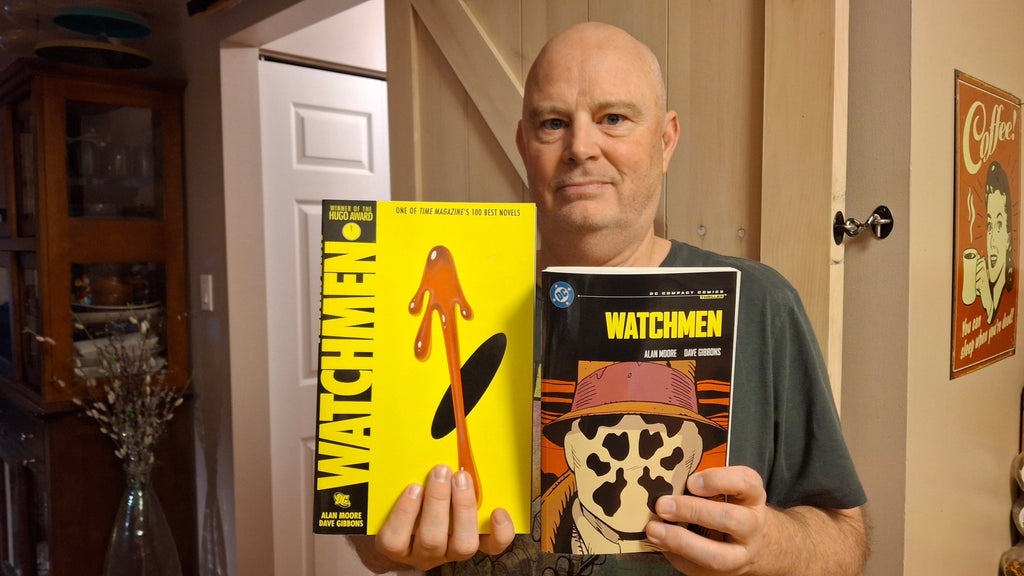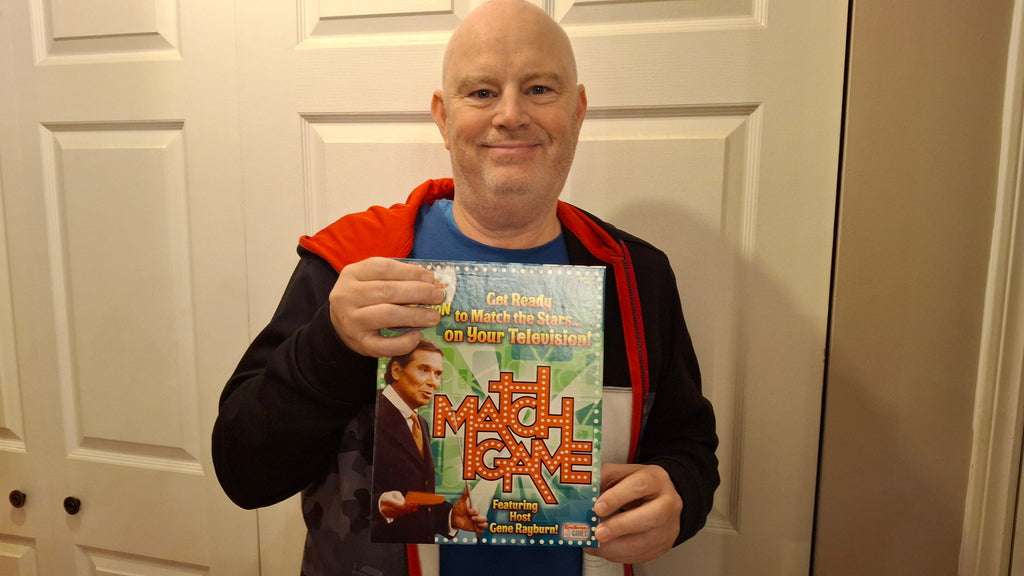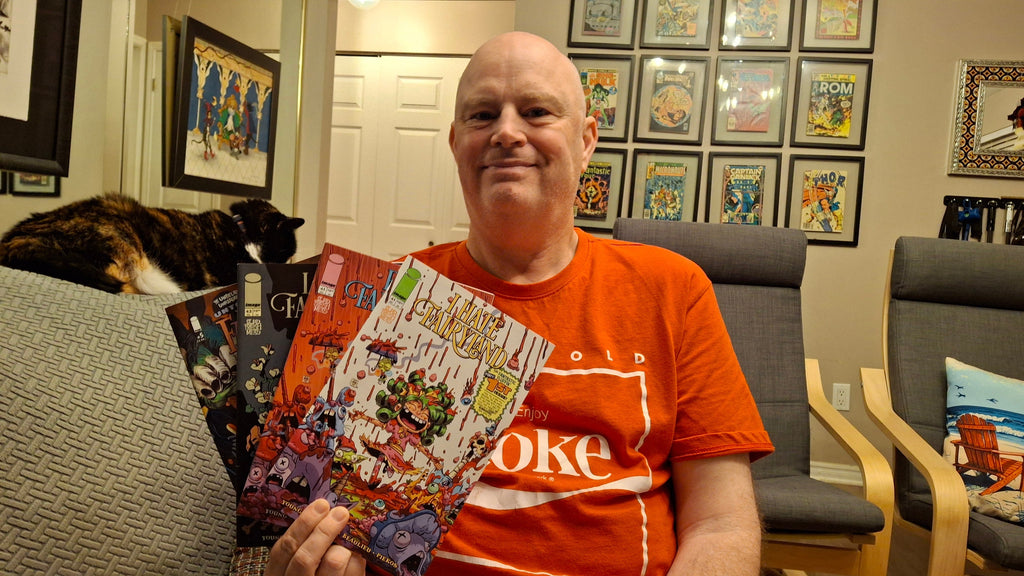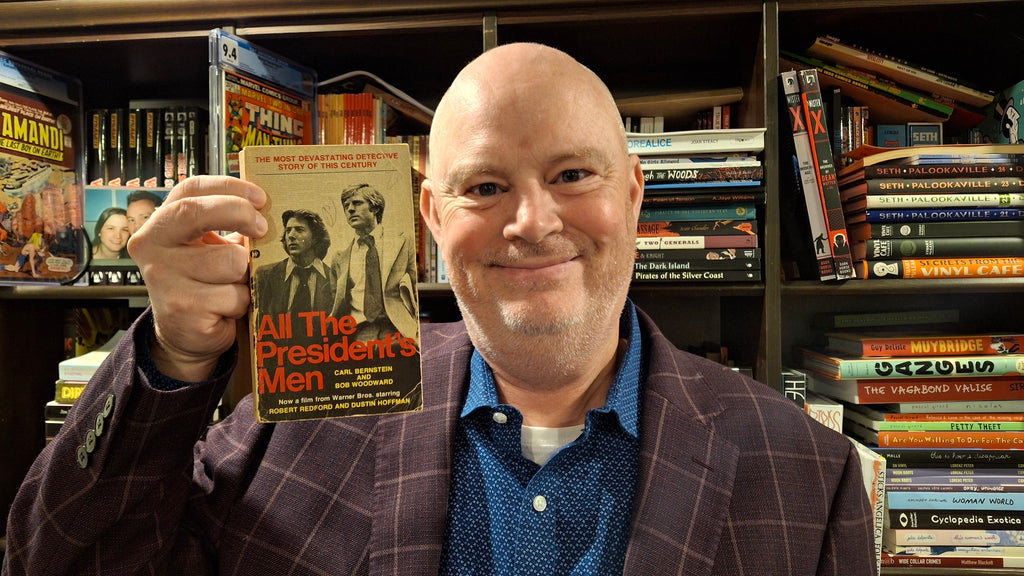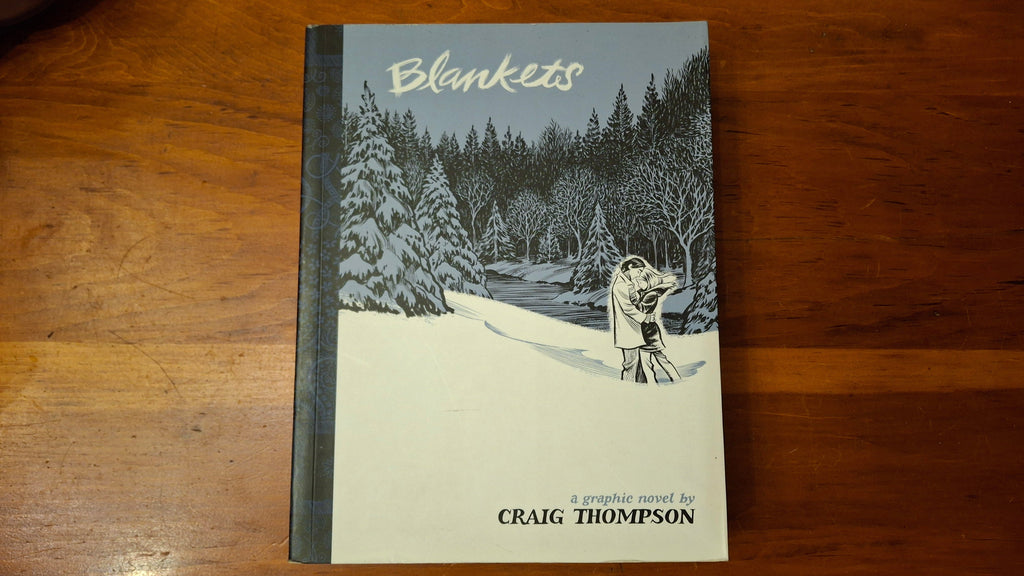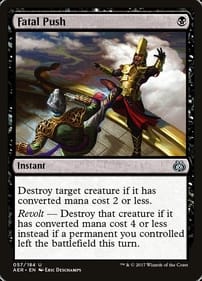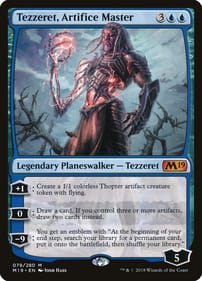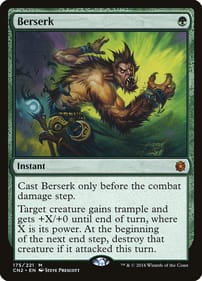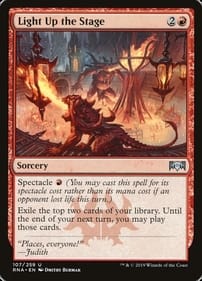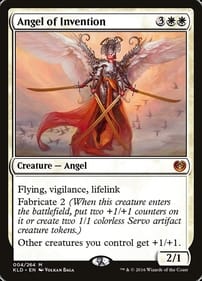Why Not AI Actors?
By Dan Brown One AI-generated actress tries to get an agent, and all of sudden Hollywood loses its mind. That’s what happened over the last couple weeks when the company behind Tilly Norwood, the AI performer, shopped its creation around Tinseltown to talent agencies in hopes of attracting representation – as reported in outlets like the Hollywood Reporter. Tilly buys iced coffee on the street. Tilly has money problems. And even though Tilly has an Instagram account like other celebrities, she’s not a real person. It’s a character, a program that could even be a useful tool in the hands of the right filmmaker. (Tilly also waves a lot, I think to show that her hands don't have any extra digits.) Among those speaking out against Norwood was SAG-AFTRA, the union that represents the human actors who appear in movies and on television in the U.S. “It has no life experience to draw from, no emotion and, from what we’ve seen, audiences aren’t interested in watching computer-generated content untethered from the human experience,” the union huffed in a statement, “It doesn’t solve any ‘problem’ — it creates the problem of using stolen performances to put actors out of work, jeopardizing performer livelihoods and devaluing human artistry.” Does this union know anything about movie history? At its most basic, Tilly Norwood is just the latest special effect in an industry whose trade is making unbelievable things look real. And computer-generated characters have been on our screens since at least the early 1990s, when George Lucas used them as background actors in The Young Indiana Jones Chronicles, paving the way for his Star Wars prequel trilogy. It’s funny, because when Lucas debuted the character Jar-Jar Binks in 1999’s The Phantom Menace, I remember a lot of griping about the Gungan by critics, but no one complained the alien was putting anybody out of work due to his being a CGI creation. Animation itself goes back several decades deeper into the past. Has SAG-AFTRA ever objected that Foghorn Leghorn was a danger to its members? As for the charge that Norwood was trained on the performances of human actors without compensation, that holds water. It’s also what flesh-and-blood performers have been doing since acting was invented. Did Christian Slater ever pay Jack Nicholson for being the basis of his character in the 1988 film Heathers? No, because there’s a time-honoured tradition that younger actors study classic performances – by Nicholson, Marlon Brando, Meryl Streep, Al Pacino, take your pick – and then swipe the mannerisms of their elders, incorporating them into their own work. No doubt the union heads are working on a way to outlaw that “theft,” too. Also, I hate to break it to SAG, but agreeing to represent an AI isn’t the sleaziest thing a Hollywood agent has ever done to make a buck. Me, I’m old school. I happen to believe no AI or CGI or any other character brought to life by means of technological trickery will ever be able to approximate what the best actors can do on the movie or TV screen, or on stage for that matter. From what I’ve seen so far, they won’t even be able to come close. But if audiences decide they want to watch Tilly Norwood over the real thing, who am I to say they’re wrong? Here’s a novel idea: Let’s let the market decide. Dan Brown has covered pop culture for more than 33 years as a journalist and also moderates L.A. Mood’s monthly graphic-novel group.
Compact Edition Not Quite Watchmen Babies
By Dan Brown When it comes to comics, size matters. But not as much as paper quality. That’s my conclusion after checking out a mini-edition of the classic Alan Moore/Dave Gibbons graphic novel Watchmen. Published under the DC Compact Comics banner, the smaller reprint contains all 12 issues of the 1986 tale about a superhero murder in an alternate America teetering on the edge of nuclear war with Russia. I found the compact edition didn’t suffer for the reduction in size. Powerful scenes, like when Doctor Manhattan zaps Rorschach into oblivion, still pack a powerful punch. I have feeble middle-aged eyes, but I could still read the dialogue without straining. All that said, I still prefer the original edition. The only real advantage the compact version has is its portability. If I was taking Watchmen to read on a beach on a hot summer day, I’d reach for the smaller one. (Of course, if I took Watchmen to the beach, I’d be a deeply weird individual.) How much smaller are we talking? The Compact Comics edition measures 5.5 by 8.5 inches and has a cover price of $13.50. Compare that to the regular size, which measures 6.75 by 10.25 inches, and set me back $22.99 when I picked it up a number of years ago. (Both of them are paperbacks.) If you’re thinking “Don’t odd-size comics have a long history?” you’d be right. Growing up in the 1970s and going to the grocery store with my Mom, I’d see mini-digests of Archie comics at every checkout. I never bought even a single one. I suspect even today, it doesn’t matter much what size Archie comic you buy, the characters and stories likely land the same. But also in the Seventies, if a comic was momentous enough, it would be published in a huge oversize treasury edition (10.5 by 13.5 inches). Those ones were reserved for “event” stories, as when Superman fought Spider-Man in the first DC/Marvel crossover. When Superman squared off against Muhammad Ali in the boxing ring, that story also got the oversize treatment. Naturally, those bigger comics came with a premium price. The one shame about the tiny Watchmen book was the cheaper paper DC used, which diminishes the effect of its colour scheme. Colour artist John Higgins is the unsung hero of Watchmen, and his powerful colouring doesn’t get the props it deserves as an essential part of the Watchmen reading experience. He specifically chose a non-traditional superhero palette, and the story’s impact is lessened with the switch. Doc Manhattan, to name one example, just isn’t as otherworldly when the luminescent blue covering his body is toned down on the duller paper. Watchmen remains one of the best-selling comics of all time. It continues to top sales charts decades after it was published, first as a monthly comic, then a collected graphic novel. So my bottom line is, if a smaller version helps comic stores to move product, then it’s a good thing. If it turns newbies onto Watchmen, or even turns people into fans of the medium in general, then I’m all for it. I’m sure Alan Moore would have something angry to say. Dan Brown has covered pop culture for more than 33 years as a journalist and also moderates L.A. Mood’s monthly graphic-novel group.
Game Show Hosts Have It All
By Dan Brown Game-show hosts fascinate me. Not so much their on-screen personas (although I think it takes great skill to host a quiz show), but more their lives off-screen. What are they like in person? What do they do when they’re off the clock? Is each one slowly going insane due to the same witch’s brew that has been the doom of many an entertainer – an excess of cash and free time? I’ll admit up front I haven’t hosted a game show myself, nor have I appeared on one. I did interview Alex Trebek once when he came to Toronto in the 1990s for a cattle call in Toronto to drum up interest in appearing on Jeopardy! I also auditioned, failing to make it even as far as the first round. In the same decade, I also interviewed Ben Stein and Jimmy Kimmel (then co-hosts of Win Ben Stein’s Money). As well as such game-show regulars as Charles Nelson Reilly and Betty White, when Match Game’s Gene Rayburn died. Most of what I know about game shows, and the dudes who preside over them, comes from being a regular watcher of programs such as Wheel of Fortune, Family Feud, and Remote Control. The guys with the perfect hair and whiter-than-white teeth are handsomely paid for their services, which is as it should be. I’ve done a tiny amount of broadcast work so I can confirm that being a so-called “traffic cop” whose job is to welcome contestants, make small talk, ask questions, then move the players through the different stages of an individual episode is so much harder than it looks. And to do that with panache, day after day, is a skill few people have. They make it look easy. Five years ago, Newsweek reported Trebek earned $18 million a season. That figure puts him up there with some of the highest-paid entertainers on the small screen. Nor does that sum take into account the bucks he brought in from his other gigs, like being a spokesman for insurance companies. And unlike talk-show hosts, a guy like Trebek didn’t work all year long. Again, depending on the news source you find, he worked maybe two months out of 12 (or the weekly equivalent) taping an entire season of the long-running quiz show. The questions such a lifestyle raises are obvious. What do they do with all that time off? And with pretty much unlimited resources, what do they do to keep themselves amused? Most importantly, how do they keep themselves out of trouble? Idle rich hands, the conventional wisdom goes, are the playthings of the devil. There are some game-show hosts, the late Bob Barker to name one, who had causes they supported when not on the set. Barker, famous for his neuter-or-spay spiel at the conclusion of every showcase showdown, found focus in lending his star power to organizations that were devoted to animal welfare. It gave him something to do. However, the cause can’t be so off-the-wall that your work as a celebrity endorser takes the spotlight off your main money-maker. Pat Sajak is into conservative political causes, but you rarely heard about it when he was hosting Wheel of Fortune because he didn’t want his extracurricular activities to draw attention away from the show. I should also mention that most of these programs are filmed in California, so it would be easy for your typical American male to go to seed quickly in those surroundings. I liken them to rock stars, another group that is highly paid, but also has to contend with bags of downtime. Boredom plus money has been the end of many a promising career in the musical world. Luckily for us working schlubs, we never have to worry about how to give our existence a purpose. We’re too busy working our slaving jobs to get our pay to think about the meaning of life. Dan Brown has covered pop culture for more than 33 years as a journalist and also moderates L.A. Mood’s monthly graphic-novel group.
Derek Laufman Takes on Fairyland
By Dan Brown Derek Laufman’s work is, above all else, fun. The Byron-based comic creator took over as the artist for the Image series I Hate Fairyland with its 41st issue. Created and written by Skottie Young, the cartoony comic stars Gert – a green-haired, foul-mouthed moppet – who yearns to return to the real world. And no one is going to get in her way. I don’t know a lot about I Hate Fairyland so I recently checked out issues 41 and 42, plus an anthology comic (Untold Tales of Fairyland No. 5) that includes a Laufman-created story. I am now of the opinion that this series is the perfect showcase for his style of art. Laufman does all-ages work. He does more adult-oriented work. And I Hate Fairyland combines both strands in one unserious, fantastical, outrageous platform. With a yellow ribbon in her curls, Gert may appear to be a cute child. But she knows how to swing the double-bladed ax she carries around, the edges of which always seem to be coated in green ichor. There is something heedless, unhinged, and funny about Laufman’s outlandish characters. Gert is always accompanied on her adventures by Larry, the wide-eyed bug who is her Jiminy Cricket figure. In a move that could never happen in a modern Marvel Comic, Laufman depicts Larry with a stogie in his mouth – heaven forfend that comic fans should be able to look at pictures of tobacco products. There’s also a tattooed pink walrus who tends bar at a dragon-themed pub, a sentient golden harp that talks like a demented cherub, and a living forest with two eyes and a mouth on each tree trunk. Shades of John Byrne, who is famous for inserting cameos of himself into the comics he draws, there’s even a bearded illustrator in one bar scene who may just be Laufman himself. Gert is always drooling. Her nose is perpetually dripping. And in one scene, she identifies the steps of an invisible bridge by barfing on each one to reveal the path over a chasm. Slmon! Slurry! Slart! Sleating! Stoo! These are the sound effects as Gert stuffs her face before hurling. “That was an epic regurgitation,” she tells her sidekick with satisfaction after they have crossed safely to the other side. I Hate Fairyland No. 42 introduces a new character into the mix – the Hellicorn, who is an homage to Mike Mignola’s demonic Hellboy. Clad in a trenchcoat but no shirt, armed to the teeth, and sporting a purple pompadour, the Hellicorn journeys through a land populated by fairy-tale characters like the Old Woman in the Shoe, wreaking havoc as he shoots mud zombies, then battles with Mary (whose Little Lamb is not so small) before passing by the corpses of Jack and Jill. And yes, clenched between the brooding Hellicorn’s teeth is – a fat cigar. For more of Laufman’s art, check out his all-ages books like Bot 9 and The Witch of Wickerson, suitable reading for children. His dungeon-plundering title for mature readers is Crimson Fall. He has also done work for DC and Marvel, as well as such toy companies as Hasbro and Mattel. Laufman can tell you all about it in person when he appears on Nov. 2 at this year’s edition of Forest City Comicon, taking place at the Lamplighter Inn. I may just be first in line! Dan Brown has covered pop culture for more than 33 years as a journalist and also moderates L.A. Mood’s monthly graphic-novel group.
All the President's Men continues to Inspire
By Dan Brown After Robert Redford died on Sept. 16, the accolades came pouring in. He was remembered as a legendary actor, director, advocate for the environment, and founder of the Sundance Film Festival. What the rest of the world might not know is Redford also has a special place in the hearts of journalists of my generation. Even if you’re not a journo, you likely know Redford played real-life Washington Post reporter Bob Woodward to Dustin Hoffman’s Carl Bernstein in the 1976 feature-film adaptation of All the President’s Men, the duo’s account of their Watergate reporting, which ultimately led to Richard Nixon resigning as U.S. President. Redford fought to get the motion picture made. People told him Watergate was old news, that the country needed to move on in the aftermath of its long national nightmare, that a story about two journalists doing long hours of research wouldn’t play well on the big screen. But it did work, and All the President’s Men – the movie – is still inspiring media professionals all these decades later. It’s a journalism classic, and a perfect example of a 1970s paranoid thriller. I often turn to All the President’s Men – the book – to help inspire the young journalists I mentor at the Western Gazette, and teach at Western University. The worn paperback copy I have on my bookshelf has a picture of Redford and Hoffman on it, not the less photogenic Woodward and Bernstein. I like to remind my mentees and students that the two reporters, both in their 20s, weren’t all that much older than them when the Post helped to bring down Nixon. The book is a testament to the power of old-fashioned shoe-leather journalism. It wasn’t AI that helped the pair to trace the Watergate burglary back to the Oval Office, nor was it the internet. How primitive were the reporting tools back in the early 1970s? Heck, Woodward and Bernstein didn’t even have voicemail, it being the era of rotary telephones. What they did have was time, the most valuable resource to a journalist. Neither one of them had much of a social life, so their competitive advantage was that they came into the newsroom on weekends and stayed late in the evenings. I also remind my young charges how Woodward and Bernstein made mistake after mistake. They were swimming in uncharted waters, so the journalism textbooks of the day were no use to them. Luckily for America, they were smart enough to learn from their mistakes. They did have institutional support in the form of top Post editor Ben Bradlee. When the paper was attacked by the White House, it was Bradlee who crafted the Post’s response: “We stand by our story.” All journalists should be so lucky to have that level of confidence from their boss over a prolonged period – keep in mind Nixon didn’t quit until two years after Watergate, when the Republican brain trust on Capitol Hill told him he wouldn’t survive an impeachment conviction vote in the Senate. All the President’s Men belongs in the film canon along with the likes of the Parallax View, Network and Capricorn One. For a country that was so disillusioned, it provided a tonic by showing two regular guys who were determined to get the truth about Watergate out to the masses. Judging by recent events south of the border, it’s a message that is as crucial now as it was then. Other journalism movies I recommend: The Paper, Spotlight, Shattered Glass, Broadcast News, The Killing Fields, The Insider, Citizen Kane, Salvador, Frost/Nixon, Almost Famous, and Anchorman. Would love to hear about your own favourites in the comment box below. Dan Brown has covered pop culture for more than 33 years as a journalist and also moderates L.A. Mood’s monthly graphic-novel group.
It’s Easy To Beat Up On Graphic Novels
By Dan Brown Who will stand up for comic books? I’m thinking about this question after Alberta Premier Danielle Smith ordered school libraries in that province to pull books with pictures of “pornography” in them (her word). “What we are trying to remove are graphic images that young children should not be having a look at,” Smith added after the original ministerial order from her government blew up in her face. From what I’ve read, there are four specific graphic novels that have raised Smith’s ire: Craig Thompson’s Blankets, Alison Bechdel’s Fun Home, Mike Curao’s Flamer, and Maia Kobabe’s Gender Queer. I’ve read only one of those books, Blankets, and I recall it as an earnest attempt by Thompson to describe his struggles growing up in a fundamentalist Christian home. Perhaps Smith doesn’t like it because – spoiler warning – it ends with Thompson leaving the church. The other three books have one thing in common: The sex they depict isn’t between a man and a woman, but same-sex partners. Of course, Smith isn’t the first person to pick on comic books. Hating on comics is a tradition that goes back decades, extending back to the era when the audience for comics actually was children. These days, the typical Marvel or DC reader is a dude in his forties or fifties. You may have heard of Fredric Wertham, the notorious crank psychiatrist who campaigned against comics in the 1950s. It’s hard to believe now, but there were actual Congressional hearings in the U.S. into how comics were unfit for America’s kids. There were also comic-book burnings. Among his complaints with comics was Wertham’s feeling they were too violent, thus making young kids into juvenile delinquents. He also thought they turned straight kids into gay ones. Wertham hinted there was something going on between Batman and Robin between the panels, and even wrote a book detailing his research, which was thoroughly debunked years ago. But Seduction of the Innocent did have a major impact, with the comic industry opting for self-censorship in the form of the Comics Code, which lasted until 2011. How ridiculous was the self-censorship regime? A comic was once rejected by the Comics Code Authority censor on the basis of writer Marv Wolfman’s last name being in the credits, since the Code forbade mentions of the occult like, you know, wolfmen. Will anyone stand up for comics in Alberta this time around? I don’t know. I do know it’s easy to score political points by attacking comics and graphic novels, since there are so few organizations set up to champion them, at least in Canada. We do not have an equivalent to the U.S. Comic Book Legal Defense Fund, which supports creators, retailers, and educators. That said, I was encouraged to see that the Toronto Comics Art Festival spoke out against Smith’s lunacy. “We cannot stand by while governments and school boards strip these stories from bookshelves,” the organization’s board said in a statement early this month. “This fight is about the freedom to read. It’s about whose stories we allow to be told, and whose stories we try to silence.” I’m hoping others will follow TCAF’s example. At a time when there is a global information source containing easy access to all kinds of actual hardcore pornography, it seems odd to single out graphic novels that young Albertans likely aren’t all that interested in reading in the first place. They’d rather be playing on their phones. Dan Brown has covered pop culture for more than 33 years as a journalist and also moderates L.A. Mood’s monthly graphic-novel group.



